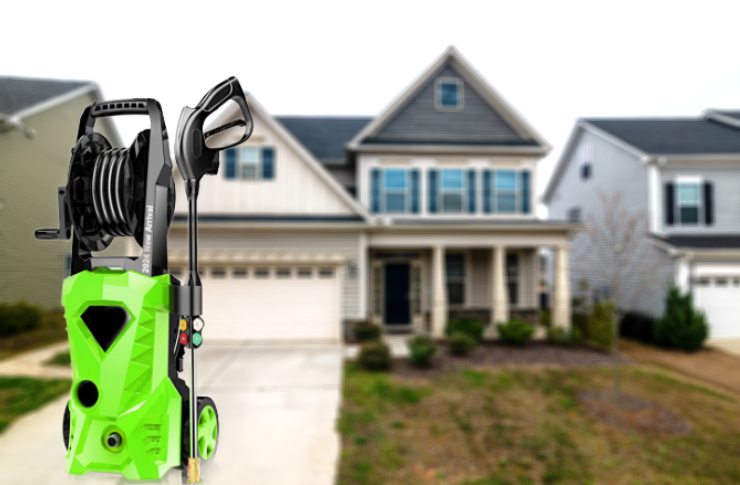Banish Bugs: Your Guide to a Pest-Free Home
Discover how to protect your sanctuary from unwelcome critters. Our comprehensive guide unveils expert strategies for identifying common household pests, implementing preventive measures, and selecting effective extermination methods. Learn when to tackle the problem yourself and when to call in the professionals. Safeguard your home, health, and peace of mind with our tried-and-true pest control wisdom.

Unwanted houseguests come in all shapes and sizes, from tiny ants to furry rodents. Let’s explore the most common intruders and how to show them the door.
Know Your Enemy: Identifying Common Household Pests
-
Ants: These industrious insects can quickly form colonies in your home, attracted by food sources and moisture.
-
Cockroaches: Resilient and fast-breeding, these pests pose significant health risks and are notoriously difficult to eradicate.
-
Rodents: Mice and rats aren’t just uninvited guests; they’re potential carriers of diseases and can cause extensive property damage.
-
Termites: Silent but destructive, these wood-eaters can compromise your home’s structural integrity if left unchecked.
-
Bed Bugs: These blood-feeding insects infest bedding and furniture, causing discomfort and sleepless nights.
-
Spiders: While most are harmless, some species can be venomous, making identification crucial.
Recognizing these common culprits is the first step in developing an effective pest management strategy.
Fortify Your Fortress: Preventing Pest Invasions
An ounce of prevention is worth a pound of cure, especially when it comes to pest control. Here’s how to make your home less inviting to unwanted visitors:
-
Seal the Cracks: Inspect your home’s exterior for potential entry points and seal them promptly.
-
Clean House: Regular cleaning, particularly in kitchens and bathrooms, eliminates food sources and discourages pests.
-
Smart Storage: Keep food in airtight containers and dispose of garbage frequently.
-
Dry It Out: Fix leaks and eliminate standing water to deter moisture-loving pests.
-
Landscape Wisely: Trim vegetation away from your home and remove debris that could harbor pests.
-
Natural Deterrents: Harness the power of pest-repelling plants and essential oils.
By implementing these preventive measures, you’ll significantly reduce the risk of pest infestations.
When to Call in the Cavalry: Professional Extermination
While DIY methods can be effective for minor issues, certain situations call for professional intervention:
-
Persistent Problems: If your efforts aren’t yielding results, it’s time for expert help.
-
Overwhelming Infestations: Large-scale problems, especially involving termites or bed bugs, often require professional treatment.
-
Health Hazards: When dealing with venomous or disease-carrying pests, leave it to the pros.
-
Preventive Maintenance: Regular professional inspections can nip potential issues in the bud.
-
Legal Obligations: Some properties may require professional pest control services by law.
Remember, pest control experts have access to specialized tools and treatments that are often more effective than consumer-grade solutions.
Arsenal of Defense: Effective Pest Control Methods
The best approach to pest control often involves a combination of techniques tailored to your specific situation:
-
Chemical Warfare: Pesticides and insecticides can be highly effective but should be used with caution and according to instructions.
-
Baits and Traps: These methods are particularly useful for controlling rodents and certain insects.
-
Heat Treatments: Effective against bed bugs and some other pests, this method uses high temperatures to eliminate infestations.
-
Biological Control: Introducing natural predators or parasites can help control pest populations.
-
Integrated Pest Management (IPM): This comprehensive approach combines multiple strategies for long-term pest control.
Choosing Your Ally: Selecting a Reliable Pest Control Service
When professional help is needed, choosing the right service is crucial. Consider these factors:
-
Credentials: Ensure the company is properly licensed and employs certified technicians.
-
Track Record: Look for established companies with positive customer reviews and a solid reputation.
-
Methods: Inquire about their techniques and products, preferring those that offer eco-friendly options.
-
Guarantees: Reputable companies often provide guarantees and follow-up services.
-
Transparency: Get detailed quotes and clarify any potential hidden fees.
Green Warfare: Eco-Friendly Pest Control Options
For the environmentally conscious homeowner, there are several sustainable pest control solutions:
-
Natural Predators: Encourage beneficial insects or animals that prey on pests.
-
Essential Oils: Peppermint, tea tree, and citronella oils can repel various pests.
-
Diatomaceous Earth: This natural, non-toxic substance is effective against many crawling insects.
-
Neem Oil: An organic compound that combats a wide range of pests.
-
Vinegar Solutions: Effective for deterring ants and other small insects.
-
Ultrasonic Devices: While effectiveness varies, these emit high-frequency sounds to repel pests.
These methods can be particularly suitable for minor infestations and households with children or pets.
Effective pest control is an ongoing process that requires vigilance, prevention, and sometimes professional intervention. By understanding your adversaries and implementing a combination of preventive measures and targeted treatments, you can maintain a pest-free home environment. Remember, while DIY methods can be effective for minor issues, persistent or large-scale infestations often require professional expertise to ensure complete and lasting eradication. With the right approach, you can reclaim your home from unwanted invaders and enjoy a safe, comfortable living space.






